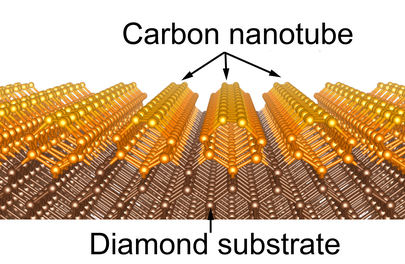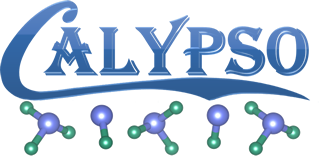CALYPSO (Crystal structure AnaLYsis by Particle Swarm Optimization) is an efficient structure prediction method and its same-name computer software. The approach requires only chemical compositions for a given compound to predict stable or metastable structures at given external conditions (e.g., pressure), thus the CALYPSO package can be used to predict/determine the crystal structure and design the multi-functional materials (e.g., superhard). The CALYPSO package is protected by the Copyright Protection Center of China with the registration No. 2010SR028200 and classification No. 61000-7500.
WHAT IS THE FEATURE?
- Predictions of the energetically stable/metastable structures at given chemical compositions and external conditions (e.g., pressure) for clusters, 2D layers, surfaces, and 3D crystals.
- Design of novel functional materials, e.g., superhard materials.
- Options for the structural evolutions using global or local PSO.
- Structure searches with automatic variation of chemical compositions.
- Structure predictions with fixed cell parameters, or fixed space groups, or fixed molecules.
- CALYPSO is currently interfaced with VASP, CASTEP, Quantum Espresso, GULP, SIESTA and CP2K codes. The interface with other total energy codes can also be implemented by users' request.
Major Techniques Employed
The success of CALYPSO method is on account of the integration of several major techniques:
- Structural evolution through PSO algorithm. PSO is best-known for its ability to conquer large barriers of energy landscapes by making use of the swarm intelligence and by self-improving structures. Both global and local PSO algorithms have been implemented. The global PSO has the advantage of fast convergence, while local PSO is good at avoiding premature convergence and thus enhance the capability of CALYPSO in dealing with more complex systems.
- Symmetry constraints during structure generation to reduce searching space and enhance the structural diversity.
- Structural characterization techniques to eliminate similar structures, define nonflying areas, enhance searching efficiency, and divide energy surfaces for local PSO searching.
(i) bond characterization matrix technique
(ii) atom-centered symmetrical function technique - Introducing new structures per generation with controllable percentage to enhance structural diversity.
- Interface to a number of local structural optimization codes varying from highly accurate DFT methods to fast semiempirical approaches that can deal with large systems. Local structural optimization enables the reduction of noise of energy surfaces and the generation of physically justified structures.
Why PSO?
As an unbiased global optimization method, particle swarm optimization (PSO) is inspired by the choreography of a bird flock and can be viewed as a distributed behavior algorithm that performs multidimensional search (see, e.g., Kennedy & Eberhart 1995). PSO is metaheuristic as it makes few or no assumptions about the solutions and can search very large spaces of candidate solutions (dubbed as particles) by moving them in the search-space based on efficient algorithms over the particle's position and velocity.
“In past several years, PSO has been successfully applied in many research and application areas. It is demonstrated that PSO gets better results in a faster, cheaper way compared with other methods.
Another reason that PSO is attractive is that there are few parameters to adjust. One version, with slight variations, works well in a wide variety of applications. PSO has been used for approaches that can be used across a wide range of applications, as well as for specific applications focused on a specific requirement.”
---- Thanks to http://www.swarmintelligence.org
History of PSO on Structure Prediction
Although PSO algorithm has been employed to various optimization problems, the application of PSO in structure prediction started only recently. It was attempted for isolated systems (small clusters and molecules) by Call, Zubarev & Boldyrev in 2007. However, this effort did not lead to any practical application.
The CALYPSO team independently initialized the idea of applying PSO algorithm into structure prediction in 2006 (Ma and Wang) before Call et al’s work and made the first application of PSO algorithm into structure prediction of extended systems (e.g., 3D crystals by Wang, Lv, Zhu & Ma in 2010, 2D layers by Wang, Miao, et al, in 2012, 2D surface reconstruction by Lu et al, in 2014). Structure searching efficiencies of isolated systems have been substantially improved by the CALYPSO team (Lv, Wang, Zhu & Ma) in 2012, where the success of this application has been backed up with the introduction of various efficient techniques (e.g., bond characterization matrix for fingerprinting structures, symmetry constraints on structure generation, etc.).
The CALYPSO method, packed with the PSO algorithm and many enhancement techniques, is successful in solving numerous structural problems. As a result, CALYPSO has received world-wide attention. Till the middle of 2018, there are more than 2200 registered users of CALYPSO, distributed over 59 different countries. In only 8 years, the success of CALYPSO code has been recorded in over 610 high-profile publications, including a number of papers in Nat. Chem., Nat. Commun., PNAS, PRL, JACS, Angew. Chem. Int. Edit., etc.















